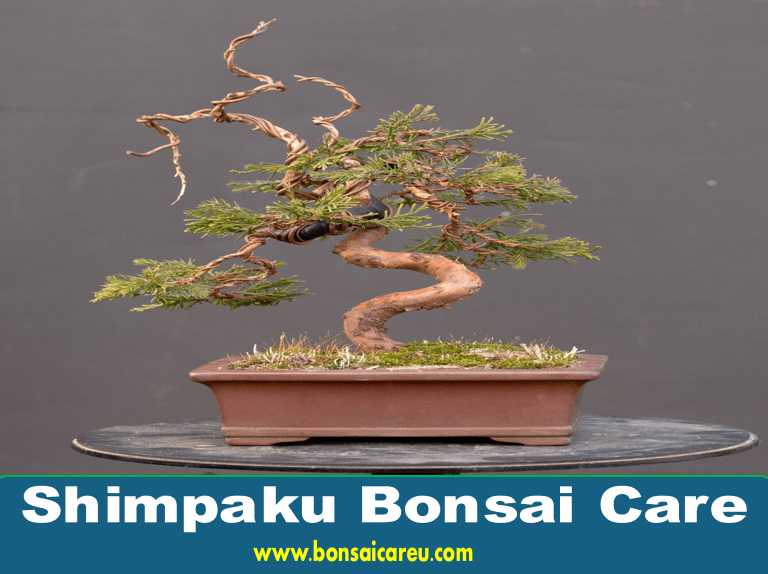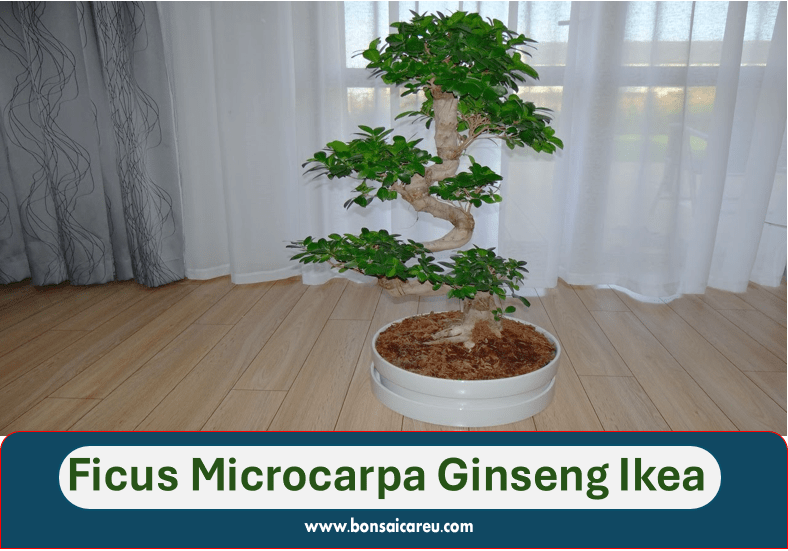Shimpaku Bonsai Care: Shimpaku Bonsai is a variant of the Chinese juniper popular among bonsai artists for its elegant form and bright foliage. Originating from deep, rocky mountains in Japan, it is academically known as miyama byakushin but is commonly referred to as shimpaku, which means ‘true juniper.’
With its unique adaptation to challenging environments, the shimpaku has become a favorite choice for bonsai enthusiasts seeking a distinctive and visually appealing addition to their collection. Its dense and vibrant foliage and ability to thrive in harsh conditions have captured the attention of bonsai artists and enthusiasts worldwide.
Its resilience and striking aesthetic qualities make it a sought-after species for creating captivating bonsai compositions. Whether displayed as a formal upright, cascade, or windswept style, the shimpaku bonsai embodies the timeless allure of traditional Japanese artistry.

Introduction To Shimpaku Bonsai
Shimpaku Bonsai is a popular bonsai tree variety known for its versatility and unique features. It is available in different styles, including semi-cascade, formal upright, and windswept, and is commonly used for its beautiful foliage, twisted trunks, and unique shapes.
The Allure Of Shimpaku
Shimpaku Bonsai, with its elegant beauty and unique charm, captivates bonsai enthusiasts worldwide.
Shimpaku’s Place In Bonsai History
Shimpaku Bonsai is revered for its exquisite form and versatility in the rich tapestry of bonsai history.
Selecting Your Shimpaku
Selecting your Shimpaku bonsai involves choosing the ideal foliage type for your juniper. Ensure tight Itoigawa foliage for a beautiful result. Carefully consider the tree’s shape and orientation for a stunning transformation.
Traits Of A Healthy Shimpaku Bonsai
When selecting a Shimpaku bonsai, it’s important to look for certain traits that indicate the tree is healthy and has the potential to thrive. These traits include:
- Thick, healthy foliage
- Evenly spaced branches
- No signs of pests or disease
- A well-developed trunk and root system
- Good overall shape and balance
Inspect your potential Shimpaku bonsai carefully to ensure it meets these criteria. A healthy tree will likely survive and thrive in your care.
Different Styles: From Shohin To Kishu
Shimpaku bonsai comes in various styles, from the small and delicate Shohin to the more substantial Kishu. Some of the most popular styles include:
- Cascade
- Semi-cascade
- Forest
- Share
- Mini
- Mame
- Small
- Informal Upright
- Trunk
- Kishu
- Japanese
- Award-Winning
- Literati
- Twisted
- Yamadori
- Windswept
- Formal Upright
Each style has its unique characteristics and requires different care and maintenance. Consider the style that best suits your preferences and experience level as a bonsai grower. Remember, selecting your Shimpaku bonsai is an important decision that should not be taken lightly. Take the time to carefully evaluate each tree to ensure you are getting a healthy specimen that will thrive in your care.
Optimal Growing Conditions
Shimpaku Bonsai requires specific conditions to thrive. Here are the optimal growing conditions for your Shimpaku Bonsai:
Sunlight And Temperature Needs
- Sunlight: Place your Shimpaku Bonsai in a spot receiving full sun for at least 6 hours daily.
- Temperature: Keep the bonsai in a location where temperatures range between 50-70°F.
Humidity Preferences
- Humidity: Maintain moderate to high humidity levels for your Shimpaku Bonsai.
By providing adequate sunlight, ideal temperatures, and proper humidity levels, you can ensure your Shimpaku Bonsai grows healthily and beautifully.
Watering And Feeding
Proper watering and feeding are essential for maintaining the health and vigor of your Shimpaku Bonsai. Following the right irrigation techniques and fertilization schedule ensures that your bonsai thrives and remains visually stunning.
Irrigation Techniques For Shimpaku
Watering your Shimpaku Bonsai is a crucial aspect of its care. This species requires well-draining soil to prevent soggy roots, which can lead to root rot. Water the bonsai when the topsoil feels slightly dry, but avoid letting it completely dry. Ensure that the water reaches all parts of the root system. Using a watering can with a fine rose is important to distribute water evenly and gently. Avoid overwatering, as this can also cause issues with the roots. Monitor the moisture levels regularly to maintain the ideal balance for your Shimpaku Bonsai.
Fertilization Schedule
Feeding your Shimpaku Bonsai at the right time and with the right nutrients is crucial for its growth and overall health. During the growing season in spring and summer, apply a balanced liquid fertilizer every two weeks to provide essential nutrients. In the fall, you can reduce the frequency of fertilization to once a month. Avoid fertilizing during the winter months, as the plant is dormant. Choose a fertilizer specifically formulated for bonsai to ensure that it meets the unique needs of your Shimpaku Bonsai. Follow the instructions on the product label for the correct application and dosage.
Pruning And Shaping
Pruning and shaping are essential techniques for maintaining the health and aesthetics of Shimpaku bonsai. Proper pruning helps control the tree’s growth and encourages the development of its desired shape. Shimpaku bonsai can be shaped into styles, such as formal upright, informal upright, cascade, and windswept, each requiring specific pruning and shaping techniques to achieve the desired look.
Basic Pruning Steps
When pruning a Shimpaku bonsai, it is important to start with the basic steps to maintain its health and form. Begin by inspecting the tree for dead, diseased, or overgrown branches. Use sharp and clean pruning shears to remove these unwanted parts carefully. Additionally, trimming the foliage to maintain the desired silhouette and promote airflow within the tree is crucial for its overall well-being. Regularly checking for new growth and pinching off unwanted shoots helps maintain the bonsai’s compact shape.
Advanced Styling Tips
For those looking to take their Shimpaku bonsai to the next level, there are advanced styling tips to consider. One technique is wiring, which involves wrapping the branches with wire to guide their growth and create intricate shapes. However, caution should be exercised to avoid damaging the tree. Another advanced method is grafting, which allows for the fusion of desired traits from different trees onto the Shimpaku bonsai, resulting in unique and stunning features. Additionally, thinning dense foliage to create a more open and natural appearance can enhance the bonsai’s aesthetic appeal.
Repotting And Soil Management
Proper repotting and soil management are essential for maintaining the health and vitality of your Shimpaku Bonsai. Understanding when and how to report and choosing the right soil mix are crucial aspects of bonsai care.
When And How To Report
- Timing: Repot your Shimpaku Bonsai every 2-3 years in early spring before new growth appears.
- Procedure: Carefully remove the tree from its pot, trim the roots, and repot in fresh soil, ensuring proper drainage.
- Signs: Report if you notice the roots circling the root ball or if the soil has become compacted.
Choosing The Right Soil Mix
Creating the perfect soil mix for your Shimpaku Bonsai is crucial for its health and growth. Here are some tips:
- Well-draining: Use a mix of Akadama, pumice, and lava rock for optimal drainage.
- Aeration: Incorporate organic matter like pine bark to promote aeration and root health.
- pH balance: Ensure the soil mix is slightly acidic to mimic the tree’s natural environment.

Frequently Asked Questions For Shimpaku Bonsai Care
What Is A Shimpaku?
A shimpaku is a variant of Chinese juniper adapted for rocky mountain growth in Japan. Its dense foliage and elegant form make it popular among bonsai artists, earning it the nickname “true juniper. “
How To Care For Shimpaku Bonsai?
To care for shimpaku bonsai, spray the foliage often during the growing season for optimal health.
When To Repot Shimpaku Bonsai?
Report shimpaku bonsai every 2-3 years in early spring before new growth starts. Check the roots for overcrowding and trim if necessary.
How Fast Does Shimpaku Juniper Grow?
Shimpaku juniper grows slowly, adding about 3 to 4 inches of new growth each year.
What Is The Origin Of Shimpaku Bonsai?
Shimpaku Bonsai originated in Japan and holds cultural significance in bonsai art.
How To Care For A Shimpaku Bonsai?
Provide well-draining soil, ample sunlight, regular watering, and occasional pruning for optimal growth.
Conclusion
Shimpaku Bonsai offers a unique and elegant form, making it popular among bonsai artists. Its dense, bright foliage and adaptability to rocky terrains make it a sought-after choice. With proper care and maintenance, Shimpaku Bonsai can thrive and add a touch of natural beauty to any space.


